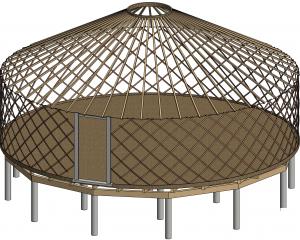An application to develop 35 residential lots on 300ha of farmland between Wanaka Airport and the Clutha River was described as a ''test case'', at a Queenstown Lakes District Council resource consent hearing in Wanaka yesterday.
The Upper Clutha Environmental Society was one of seven submitters to the Corbridge Estates Ltd consent application, and called for the number of lots to be reduced by 13.
In his written submission to independent commissioners Jane Taylor and Christine Kelly, society president Julian Haworth said the development could set a precedent for further development along the Clutha River and its ''visual amenity landscape''.
The society did not object to 22 proposed houses around two lakes that would be created as a central feature of the subdivision, Mr Haworth said.
But it saw ''no merit'' in another 13 residential lots that had the effect of ''scattering'' development along the river.
Mr Haworth considered these lots were in conflict with the district plan's objectives and the ''Wanaka 2020'' planning document.
He said the developers - Lloyd Ferguson and Peter Marshall, of Wanaka - failed to fully appreciate the adverse effects of the ''clutter'' associated with 35 new dwellings, such as roading, swimming pools, tennis courts, caravans, boats, driveways, accessory buildings, washing lines, lighting and children's toys.
In her submission on behalf of Corbridge Estates, landscape architect Elizabeth Steven said the proposal, ''despite its scale and the consequent degree of landscape change'', would meet ''almost all'' the objectives and policies of the district plan as it related to landscape and visual matters and nature conservation matters.
Planner for Corbridge Estates Duncan White laid out the changes that could occur if the proposed development did not go ahead and the land was more intensively developed for agriculture instead.
The property was now run as a low-input sheep and crop operation, but to make it a more economically viable farming operation it could have new fences, shelter belts, irrigation infrastructure, including pump sheds, cows, deer, machinery noise at any time of day or night, spraying, fertiliser application and animal and silage odour.
''Such an outcome is not fanciful; indeed it is likely and could be achieved under the current rural general [zone] provisions.''
The hearing is expected to conclude today.











